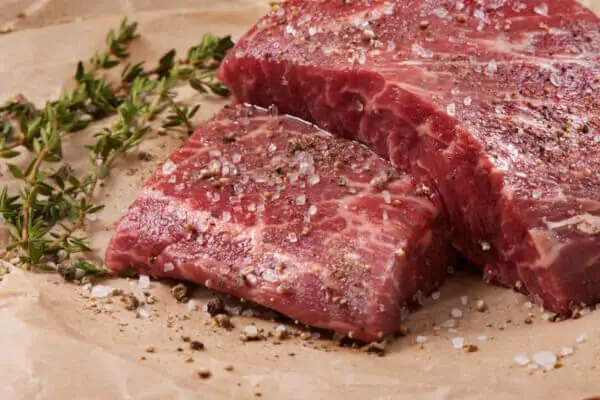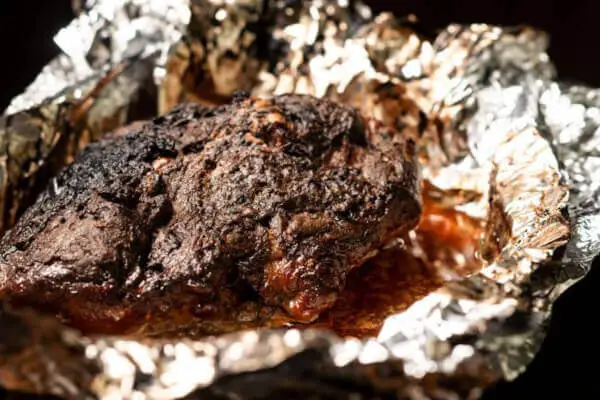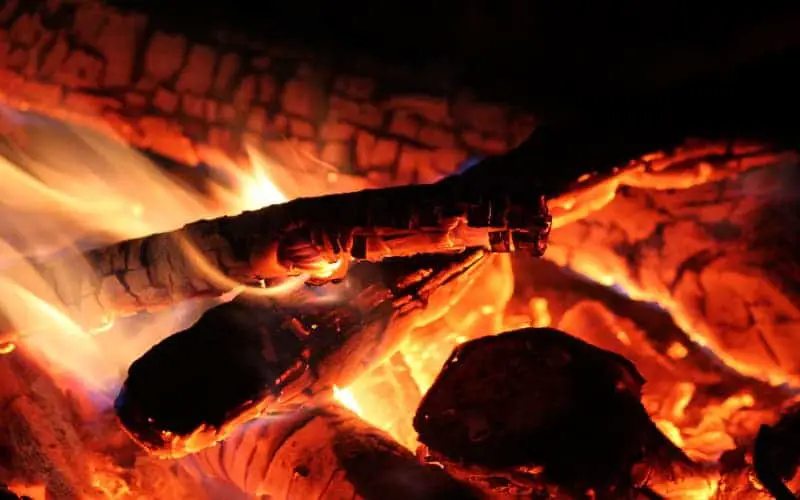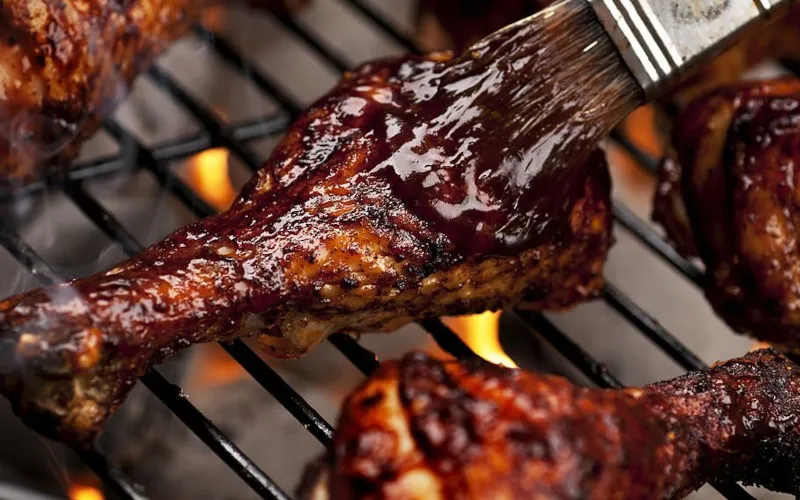If you’re a seasoned cook or just starting in the kitchen, you’ve likely come across the age-old debate of butcher paper versus foil. You may have even asked yourself which is better for cooking or packaging your food.
Well, you’re not alone! I’ve been there too, so I decided to write this article. In this article, I’ll compare and contrast the two materials to help you determine which is best for your specific needs.
Let me give you a quick rundown of what each material is. Butcher paper is a type of paper that is typically uncoated and brown and used for wrapping meat, poultry, and other food items.
On the other hand, foil is a thin sheet of metal, usually aluminum, used for cooking, wrapping, and preserving food. Both materials have advantages and disadvantages, which we’ll be exploring in this article.
So, buckle up, and let’s dive in to determine which is the winner in the battle of butcher paper versus foil.
What is Butcher Paper?

Butcher paper has been around for quite some time now, and it has a rich history in the meat industry. Butchers originally used it to wrap and transport meats from the butcher shop to the customer’s home. But, as time passed, it also started to gain popularity in the cooking world.
Butcher paper is widely used by home cooks, pitmasters, and even professional chefs. It’s a versatile material used for various cooking and packaging purposes. So, what makes butcher paper so great? Let’s take a look at its characteristics and properties.
Butcher paper is typically uncoated, which means it’s breathable and allows the meat to “breathe.” This is important because it prevents the meat from steaming and helps retain its natural juices and flavors.
It’s also durable, which means it can withstand being wrapped around meat and transported without tearing or falling apart.
One of the best things about butcher paper is its versatility. It can be used for various purposes, from wrapping meats to making decorative banners. And, let’s not forget about its cost-effectiveness. Butcher paper is typically more affordable than foil and other materials, which makes it a great option for those on a budget.
However, there are some downsides to using butcher paper as well. For one, it’s not heat-resistant, so it shouldn’t be used in high-heat cooking situations like grilling or smoking. Additionally, if it comes into contact with moisture, it can become soggy, affecting the texture and taste of your food.
Butcher paper has some noteworthy advantages yet certain restrictions. Ultimately it is your task to decide if this material suits your cooking and packaging needs best.
What is Foil?

Foil has been around for quite some time, and it’s been a popular choice for cooking and packaging for many years. It’s a thin sheet of metal, usually aluminum, that can be molded into various shapes and sizes to fit different needs.
One of the biggest advantages of using foil is its heat resistance. Unlike butcher paper, foil can handle high heat, which makes it a great option for grilling and smoking.
It’s also waterproof, which means it can be used to wrap foods that need to be stored in the refrigerator or freezer without the risk of moisture seeping in.
Another great thing about aluminum foil is its ease of use. It’s easy to mold, can be cut to size, and can be reused multiple times. Plus, it’s readily available in most grocery stores, so you don’t have to go to a specialty store.
However, there are also some downsides to using aluminum foil. For one, it’s not environmentally friendly, as it can’t be recycled as easily as other materials. Additionally, its uses are limited, as it’s not suitable for all types of cooking and packaging. Furthermore, aluminum foil should not be used to wrap food for prolonged periods, as it may contain chemicals that are not food-safe.
Foil is a great option for high-heat cooking and waterproof packaging but it has limitations. As with butcher paper, it’s up to you to determine if foil is the right choice for your specific needs.
[humix url=”https://electricsmokerhq.com/humix/video/tIFqsdGJGjf” float=”1″ autoplay=”1″ loop=”1″]
Comparison Table Between Butcher Paper And Foil
| Feature | Butcher Paper | Foil |
|---|---|---|
| Heat resistance | Low | High |
| Breathability | High | Low |
| Versatility | Good for wrapping and decorating | Good for high-heat cooking and waterproof packaging |
| Cost-effectiveness | More affordable | More expensive upfront but reusable |
| Environmental impact | Made from recycled materials and recyclable | Not recyclable |
What Is The Difference Between Butcher Paper And Foil?
Now it’s time to compare and contrast butcher paper and foil. Both materials have unique advantages and disadvantages, so it’s important to understand them to determine which is best for your specific needs.
When it comes to heat resistance, foil is the clear winner. It’s heat-resistant, which means it can handle high heat, making it an excellent option for grilling and smoking. On the other hand, butcher paper is not heat-resistant, so it shouldn’t be used in high-heat cooking situations.
In terms of breathability, butcher paper takes the lead. It’s uncoated, which means it’s breathable and allows meat to “breathe.” This is important because it helps retain the meat’s natural juices and flavors. On the other hand, foil is not breathable, which can trap the steam, leading to soggy food.
When it comes to versatility, both materials have their unique advantages. Butcher paper is a great option for wrapping meat, poultry, and other food items and making decorative banners. On the other hand, foil is a great option for waterproof packaging and high-heat cooking.
Cost-effectiveness is another factor to consider when deciding between butcher paper and foil. Butcher paper is typically more affordable than foil and other materials, which makes it a great option for those on a budget.
However, foil is reusable and can be used multiple times, saving you money in the long run.
In terms of environmental impact, foil is not the best option. It’s not recyclable, which means it hurts the environment. On the other hand, butcher paper is typically made from recycled materials and can be recycled, making it a more environmentally friendly option.
The decision should be based on your requirements when choosing between butcher paper and foil. Consider their pros and cons to determine which is most suitable for you.
Whether you’re a seasoned cook or just starting in the kitchen, understanding the pros and cons of both materials will help you make an informed decision.
Frequently Asked Questions
Does Butcher Paper Speed Up Brisket?
Wrapping a brisket in butcher paper, as opposed to aluminum foil, is an effective way to speed up the cooking process while still allowing the smoke to penetrate the meat. Although it does take some practice, it will be well worth your time and effort to master the craft – because if you get it right, you’ll be able to enjoy tender and juicy brisket at dinner time.
Plus, butcher paper allows for more breathability than other wrappings like tin foil or plastic wrap and helps to maintain moisture while eliminating any weird steamy flavors. Once you know how to do it properly, wrapping a brisket in butcher’s paper will become a key part of your BBQ skills.
Will Butcher Paper Catch Fire In The Oven?
Using butcher paper in the oven is a safe bet, as it is made from caustic soda and wood pulp, making it heat resistant. While it may not burn at higher temperatures, direct heat contact can cause it to catch fire.
This can be avoided with proper preventive measures, like refraining from placing the paper directly onto the heating element or surfaces close to it. On the other hand, other types of paper, such as those treated with wax, often cannot withstand high temperatures and should not be used for baking in an oven.
At What Temperature Will Butcher Paper Burn?
Butcher paper can save the day when it comes to grilling and smoking. It is an incredibly versatile material that can be used as a makeshift curtain or wrapping to protect food quickly, but it’s important to remember that it has its limitations.
Using too high of a temperature on the grill or smoker can cause the paper to smolder and burn, releasing noxious fumes into your food. To keep this from happening, avoid cooking with butcher paper at all temperatures above 450˚F (232˚C).
What Does Butcher Paper Do When Smoking Meat?
Regarding smoking meat, butcher paper is a must-have item for many pitmasters. Unlike aluminum foil, which isn’t breathable and can trap the steam from your meats, butcher paper will provide just enough airflow to keep the meat moist but not soggy.
Furthermore, you get the crunchy bark that so many barbecuers crave – although you must be careful not to let it dry out too much if you leave it unwrapped. But with proper planning and cautious methodology, a perfectly smoked piece of brisket can be done every time with butcher paper.
Conclusion
Well, folks, we’ve come to the end of our discussion on butcher paper vs. foil. As we’ve seen, both materials have unique advantages and disadvantages; the choice between them ultimately comes down to your specific needs.
Whether you’re a seasoned cook or just starting in the kitchen, understanding the pros and cons of both materials is key to making an informed decision.
Whether you’re looking for a heat-resistant, versatile, cost-effective, or environmentally friendly material, butcher paper, and foil have something to offer.
The choice between butcher paper and foil depends on your needs and preferences. Take the time to consider all the factors we’ve discussed, and don’t be afraid to experiment with both materials to find out which works best for you.
Happy cooking!





